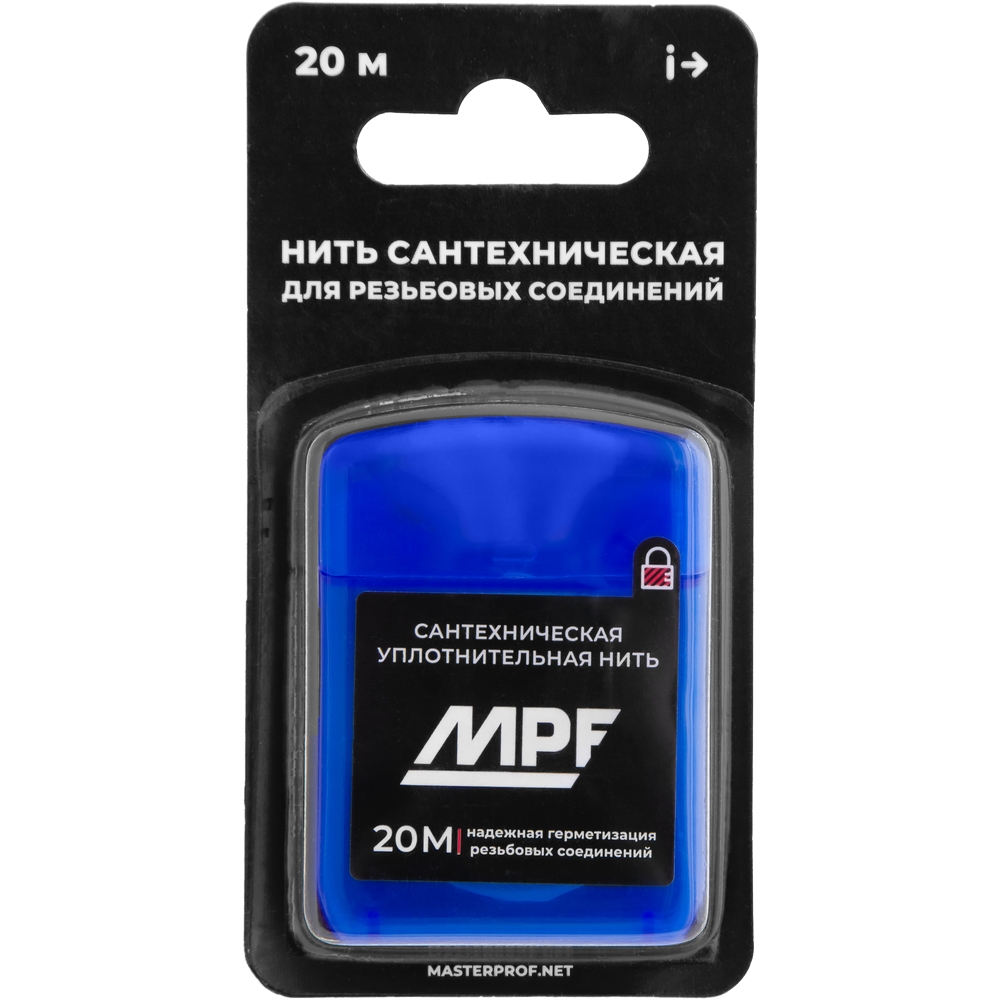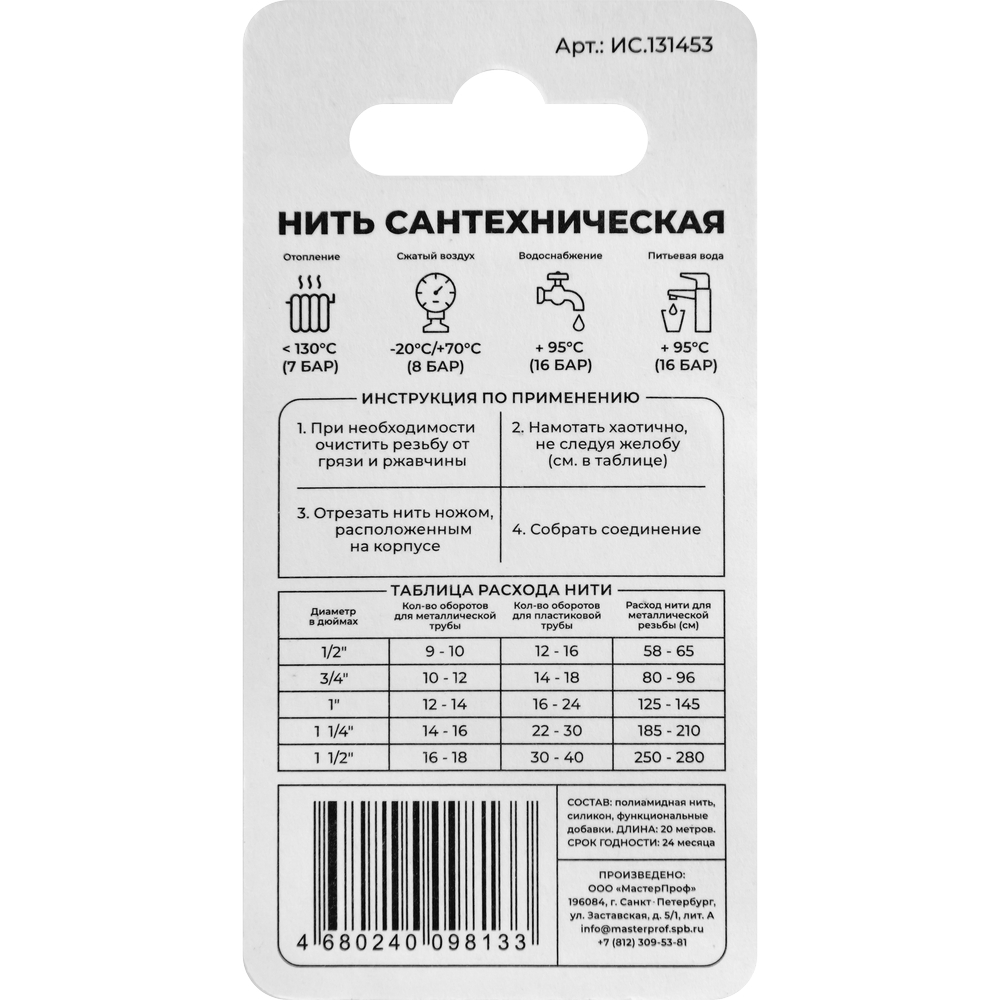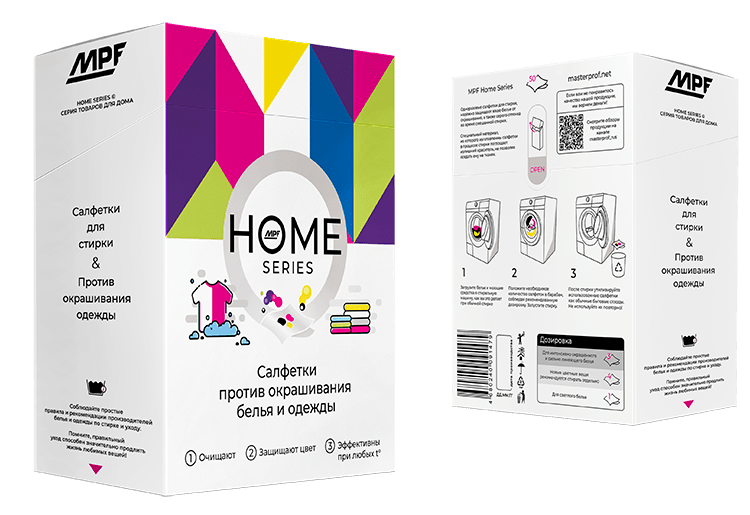Plumbing cord for thread sealing is a relatively new product on the Russian market. The product is a high-strength polyamide cord impregnated with special functional additives.
MasterProf Company manufactures this product using the most modern high-tech equipment, which allows the production of up to 5000 units of the product per shift. The cord recipe was developed by leading experts in the chemical industry, which ensures its high performance characteristics.
The MPF plumbing cord is produced in accordance with all quality control standards, thus very safe and highly reliable. All components used for production are safe for human health. The product is suitable for use in drinking water supply systems.
The MPF cord is supplied in plastic translucent boxes so that the consumer has the opportunity to visually assess the amount of remaining cord. All boxes are equipped with a built-in knife for easy cutting of the product.


How to install connections using a cord
First of all, prepare the thread: clean it from dirt and/or traces of rust (if required, use a metal brush). The plumbing cord is wound either clockwise or counterclockwise if the thread is left-handed.
There are several ways to install plumbing cord:
Terms in the description:
- End of thread is the portion of the thread that is as close as possible to the edge of the fitting.
- The beginning of the thread is the part of the thread where the flat part of the fitting ends and the thread begins (usually 5-7 turns from the edge of the fitting).
Way No. 1: Crosswise across the thread width.
Fasten the first thread with an overlap at the beginning of the thread. Wind crosswise along the thread, across its entire width. When winding, the thread should always be treated with a slight tension.
Way No. 2: Rule of thumb
Place the end of the plumbing cord as close as possible to the thread edge (thread end). Next, the first turn should overlap to fix the cord on the thread, then wind the cord from the edge of the thread to its beginning. The main winding should be in the middle of the thread (a small "bulge"). At the end of the winding, the end of the cord fits into the groove at the beginning of the thread (where the chamfer is) in order to avoid cord stripping during the initial twisting. When winding, the cord should always be treated with a slight tension.
Way No. 3: Combined
Place the end of the plumbing cord as close as possible to the thread edge (thread end). Next, fill the thread grooves with cord. After filling, perform the actions described in Way No. 1 or No. 2. When winding, the cord should always be treated with a slight tension.
Result:
If the cord is wound correctly, then the threaded connection will twist with some effort.
If the connection twists easily, too little cord is wound. It is necessary to disassemble the connection and rewind the cord anew.
If the connection is twisted too tight, then there is too much plumbing cord is wound, which is also wrong. It is necessary to disassemble the connection and rewind the cord anew.
After the installation, turn on the water supply and check the threaded connection for the presence/absence of leaks.
Note: When using plumbing cord to seal the threaded pipe connection, it is possible to adjust the connections after final assembly. Guaranteed tightness is ensured when the connection is turned 90 degrees; when turning 90-180 degrees, a thorough inspection must be carried out for leaks.
IMPORTANT! PLUMBING CORD CANNOT BE WOUND ONLY OVER THE TURNS OF THE THREAD. THIS METHOD WILL NOT PROVIDE ENOUGH SEALING AND THERE IS A GREAT RISK OF THE CORD SLIDING WHEN THE FITTING IS TWISTED.
Each product contains information on the required amount of cord for each thread size. It is important to consider this information, since if the amount of cord is significantly exceeded during installation, deformation of the fitting may occur with further leakage.
Buying plumbing cord in bulk is the right decision for many companies. The only drawback of this material is its relatively high cost. However, the advantages of the plumbing cord overlap all its disadvantages: the material cannot be damaged by hand, it is suitable for sealing any threaded connections (including those with a deformed surface). Moreover, plumbing cord is applicable for sealing absolutely any parts. Plumbing cord is great for sealing plastic parts together, or combining plastic parts with metal ones.
Plumbing cord has the following characteristics:
|
When used in heating systems |
Application temperature up to +130 °C, pressure up to 7 bar |
|
When used with compressed air |
Application temperature from -20 to +70 °C, pressure up to 8 bar |
|
When used in water supply systems |
Application temperature up to 95 °C, pressure up to 16 bar |
|
When used in heating systems |
Application temperature up to +130 °C, pressure up to 7 bar |

Wholesale plumbing cord from the manufacturer
MasterProf Company, being the largest manufacturer of plumbing cord in Russia, carries out wholesale deliveries to private plumbing stores and large DIY stores. All products are packaged in individual packaging with Euroslot, convenient for the end consumer, have an individual barcode on the packaging and information required by the Law “On the Protection of Consumer Rights”. The packaging is designed to be laid out in the sales area both on hooks and on shelves. We provide a detailed price list for the entire product range, have wide range of payment and delivery methods, and also provide advice on any issue. Over the years, we have established partnerships with many stores and suppliers.
Our production has the ability to manufacture individual batches of goods under your brand.
Since the supply of products is carried out not only in Russia, it is possible to supply products with information in English.
Our experts will help you organize your own business and select the suitable products.
Do you still have questions? Call or e-mail us, we will answer.
Telephone: +7 812 309-53-81
E-mail: info@masterprof.spb.ru
Address: Saint-Petersburg, str. Zastavskaya, 5/1.


